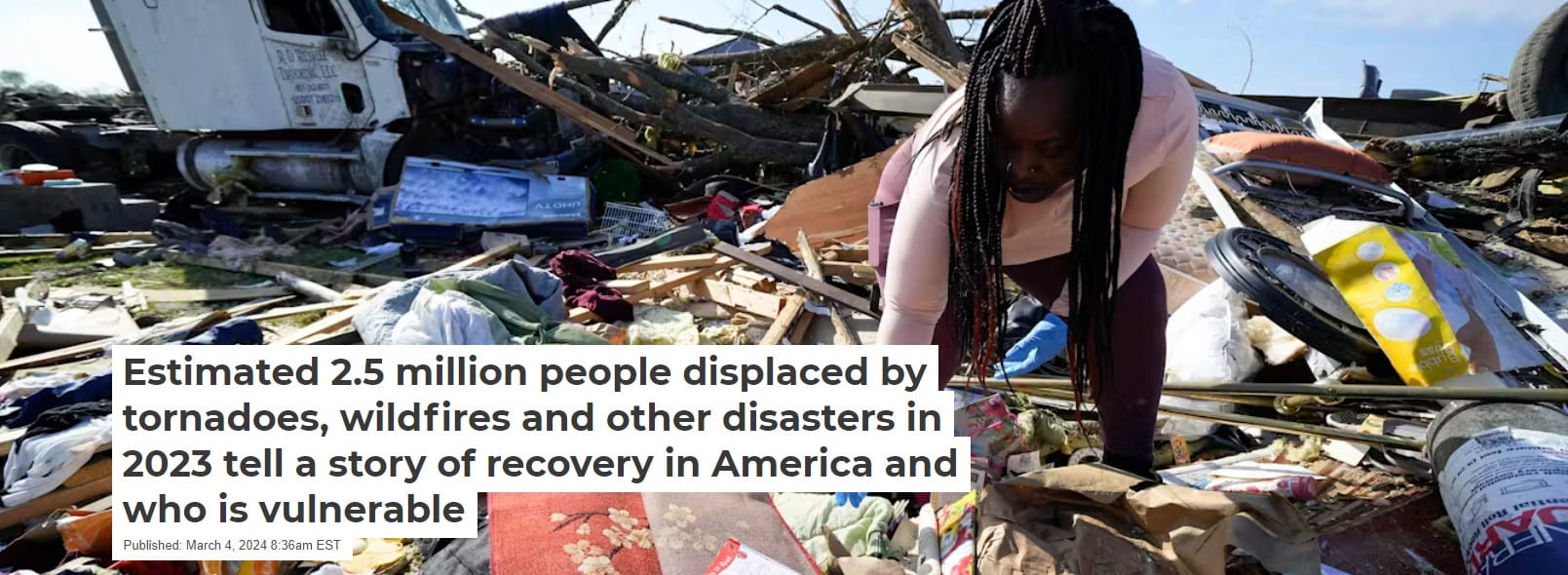Summary
Alongside her fellow co-director of the Disaster Research Center, Tricia Wachtendorf, a professor of sociology at University of Delaware, authored a news feature that discussed how people’s social circumstances and individual challenges shape how they experience disasters.
People often think of disasters as great equalizers. After all, a hurricane, tornado or wildfire doesn’t discriminate against those in its path. But the consequences for those impacted are not “one-size-fits-all.”
That’s evident in the U.S. Census Bureau’s newly released results from its national household surveys showing who was displaced by disasters in 2023.
Overall, the Census Bureau estimates that nearly 2.5 million Americans had to leave their homes because of disasters in 2023, whether for a short period or much longer. However, a closer look at demographics in the survey reveals much more about disaster risk in America and who is vulnerable.
It suggests, as researchers have also found, that people with the fewest resources, as well as those who have disabilities or have been marginalized, were more likely to be displaced from their homes by disasters than other people.
Continue reading this article in The Conversation.



